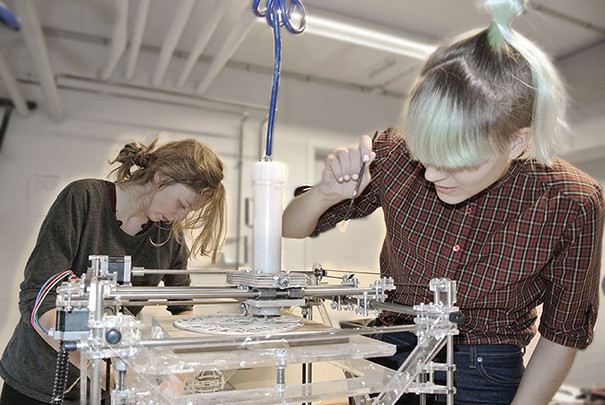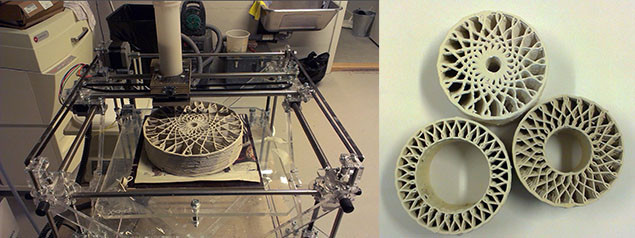
Sensitive Ceramics

This experiment is showing an interactive digital design tool for designing wall like composition with 3d ceramics. The experiment is working on two levels. One which has to do with designing compositions and patterns in a virtual 3d universe based on a digital dynamic system that responds on the movement of the hands. At a certain distance the user’s hands appear on a monitor screen as a pattern of circles, which size and 3d inner pattern are reflecting the position and speed of the hand. In that way the user are able to interact and model a responding pattern. The second level has to do with realizing the modules in ceramics by 3d printing directly in porcelain with a RapMan printer that coils up the 3d shape in layers. Finally the ceramic modules are mounted in a laser cut board that reflects the captured composition of the movement of the hands.
Background and Context
This research is about the relationship between crafting materiality and digital representation, and how experiential knowledge of crafts rooted in ceramics can be transformed and utilized in the use of digital technologies. Also the research is about how the involvement of the body is being exploited in the use of digital technology. It can be hand gestures, body movement, or the voice, that forms the basis for an interaction with a digital responding system.
How can traditional craft knowledge based on skills and experience in making three dimensional objects be utilized through digital technologies, - and thus make a close link between the designers creative process and the digital manufacturing based on the idea about crafting and execution as a unity that is intuitive and humanistic?

Process
To capture the movement of the hands a “Kinect” developed for the video game console X-box is used. The Kinect records the movement which is input to an interactive 3d system developed in Rhino with the plugin Grasshopper. The movement is transformed into circles with a 3d pattern that reflect the position and speed of the hands on a monitor screen. Subsequently each of the 3d modular patterns is translated into a code. The code informs a RapMan 3d printer to print directly in porcelain layer by layer. After printing the porcelain is glazed and fired to 1280 degrees. Finally the ceramic modules are mounted in a laser cut board that reflects the captured composition of the movement of the hands.

Experimental approach
Series of parallel and interdependent introductory experiments with digital technology and ceramic material have formed the starting point in this research. The experiments have acted as inquiries by which the concepts, technologies and material have been tested and evaluated within a wide frame of possibilities that reflects the overall research questions. What is possible and how? The introductory experiments have given rise to new questions and experiments, which at the same time have focused the research. To verify the results selected experiments have been tested in larger and larger scale over time.
The final shown experiments are not to be seen as final results, but as representative examples of experimentations that reflects the dynamic and unique possibilities in the cross border between digital and ceramic crafting.














